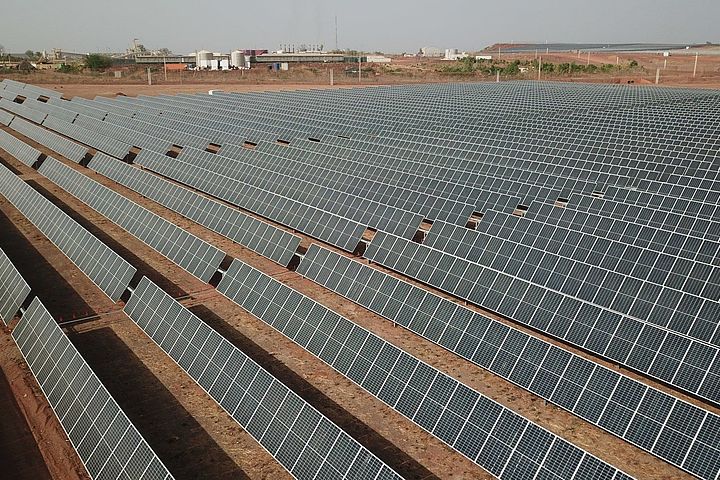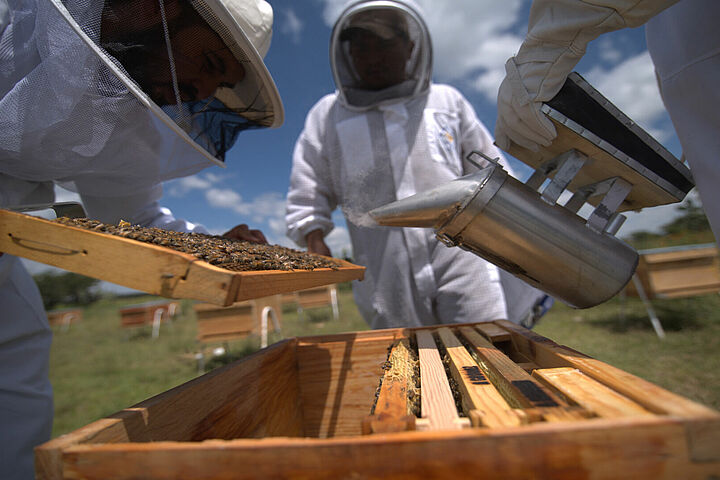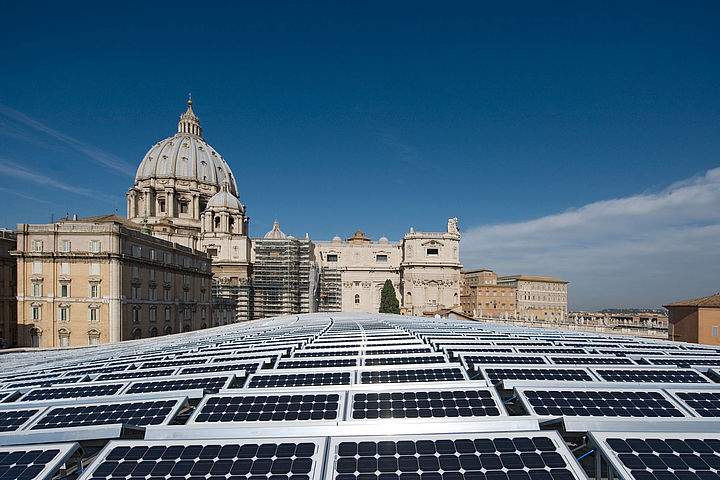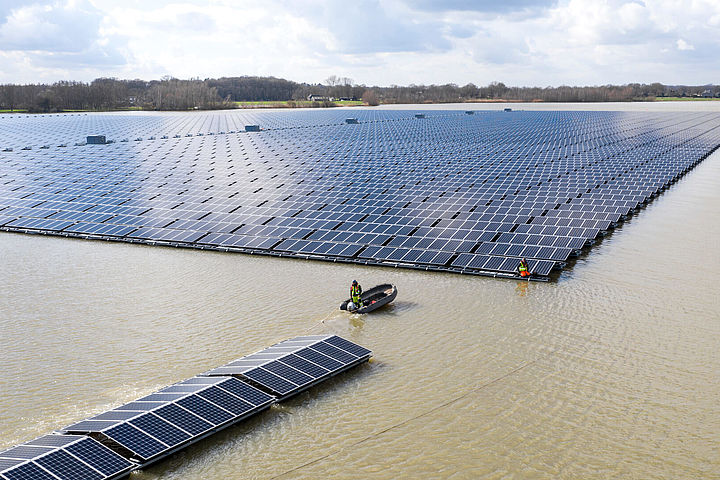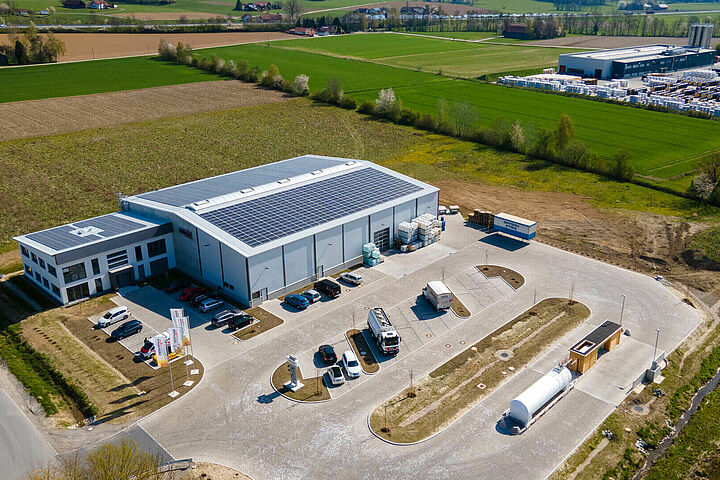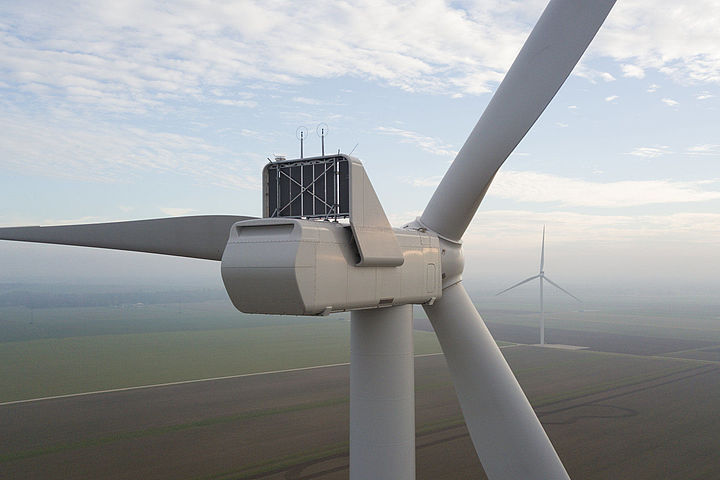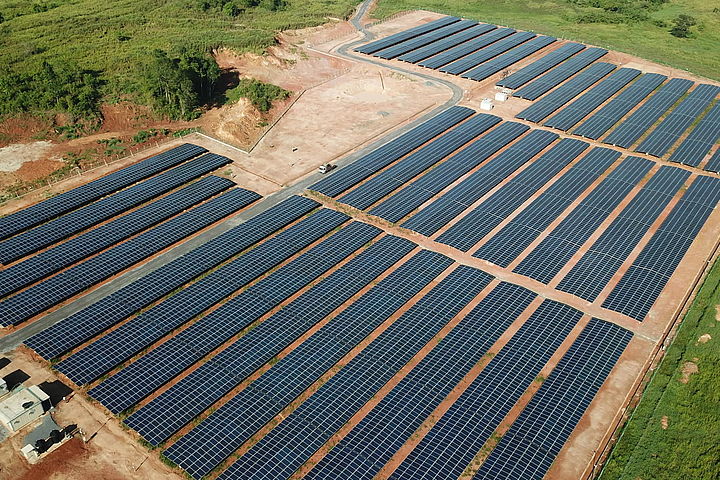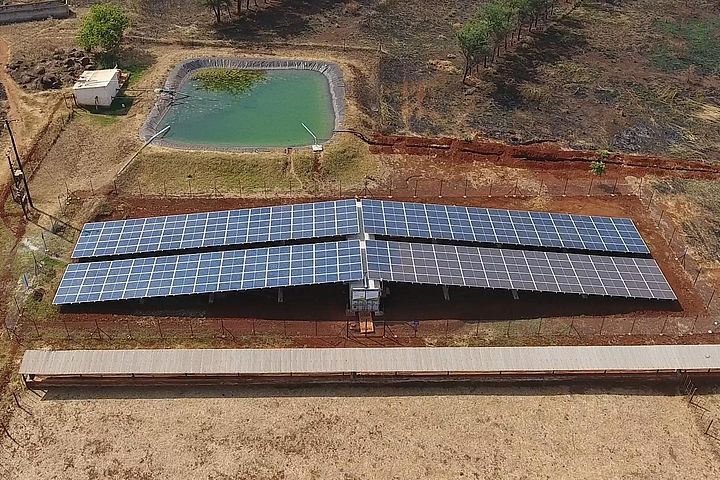Wind-solar hybrid plants raise renewable energy share
01—
Setting the scene
Pushing the planet’s exodus from fossil fuels means always looking for new ways to drive up renewable energy share. Germany has one of the world’s biggest shares, but there is always room to improve. Near Bayreuth, Bavaria, BayWa r.e. were called upon to help the grid do more.
Back in 2013, we’d helped construct a wind farm with a total output of 24MW. We maintained a strong relationship with the owners of the wind farm, and some years later it was decided to convert the site into a wind-solar hybrid plant.
Our familiarity with the site made it easier to brief our responsible teams on the task at hand. The design process quickly got underway, with the aim of using the existing grid connection to add more clean energy from an entirely new source.
02—
Meeting the challenges
Combining energy output from both wind and solar with one unified, high-capacity connection is a big technical challenge. Hybrid projects remain a rarity in Germany and many other countries, so we were dealing with hurdles which in some cases had never been encountered before.
Fusing these two outputs also meant coordinating different teams with different, albeit complementary, areas of expertise. Designing a solution around the technical and space constraints of the existing site was no mean feat.
Thankfully, our teams are no strangers to collaborating in this kind of depth. Despite hybrid plants being rare, we’ve still delivered 11 such projects around the world, totalling 82MW in solar alone. We had the right mix of experience and technical know-how to realise a workable solution.
It also helped that different teams work under the BayWa r.e. umbrella. We had established processes, service standards, and lines of communication already set up. Our people could get to work much faster than would be the case if they’d only just partnered up.
Yes, these projects require extra manpower and a bespoke technical approach. But the cost efficiencies they unlock mean hybrid plants represent the future of renewable energy.
03—
The end result
In just three months, we expanded the existing wind farm output of 24 MW at the Bayreuth location by additional 10 MWp (= 8.25 MW inverter output) solar power capacity in the first construction phase. The solar farm uses the same grid connection point as the wind farm, which means that additional renewable energy could be connected without requiring major infrastructural changes.
Since this has proven itself, a second and third construction phase with a further 17 MWp has now been completed with the support of the energy supplier, which went into operation in April 2022 and July 2023. As a result, the wind park and the solar park have almost the same capacity and use the same grid connection point with a maximum feed-in capacity of 32 MW.
This was made possible by our strong presence across both wind and solar. Knowing how each element of the project could best support the other, and being able to optimise both elements at scale, made for a successful outcome. As we look to the future, we’re confident that hybrid plants will help grids around the world do more than ever to drive up their renewable energy share.

